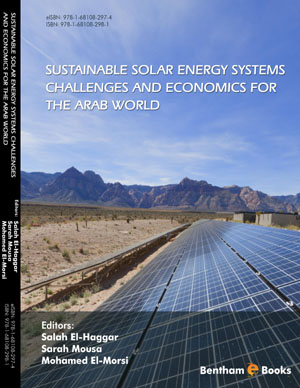Abstract
A model is developed to study the economic feasibility of adopting two kinds of solar technologies namely; solar water heaters and photovoltaics to substitute traditional systems in the residential sector. The model is a decision support system tool that guides investors and decision makers on the optimal scheme to utilize their funds and maximize the return on investment using an optimization approach over a duration of 10 years. The model considers offering a subsidy to support the diffusion of the systems through an initial fund of $1,500,000 in terms of a line of credit. The model computes the net present worth of the project and the line of credit payback period. In addition, the model provides annual percentages of the amount of money to be used in the reinvestment versus the amount used to pay back the line of credit. A case study is conducted and three proposed scenarios are applied namely; lease, loan and power-cuts tariff. The results of the study shows that the SWH line of credit payback period for the Lease, Loan and Power-Cut Tariff are 10, 9, and 10 years while the PV line of credit payback period for the Lease, Loan and Power-Cut Tariff are 8, 5, and 5 years.
Keywords: Decision support system tool, Economic challenges, Energy bond, Feed-in tariffs, Grants, implementation strategies, Lease, Line of credit, Loan, Net present worth, Optimization, Payback period, Photovoltaic panels, Power cut tariff, Rebates, Solar energy, Solar water heaters, Subsidy, Sustainable systems adoption, Tax reduction.

















